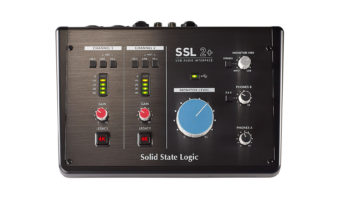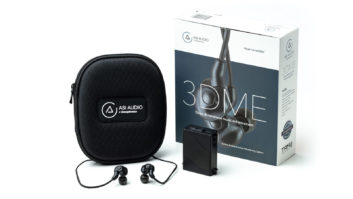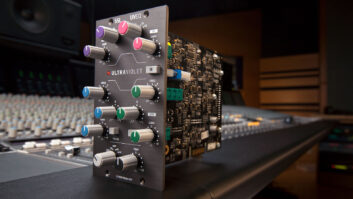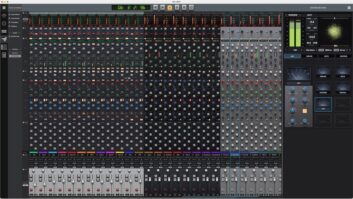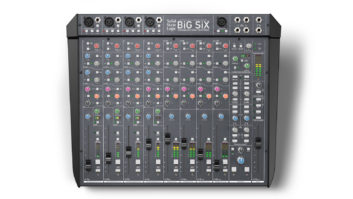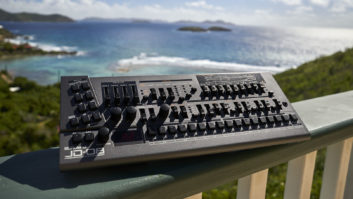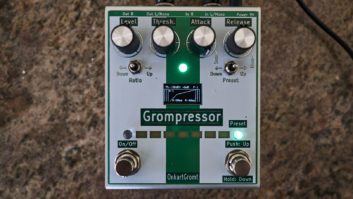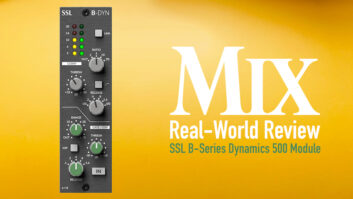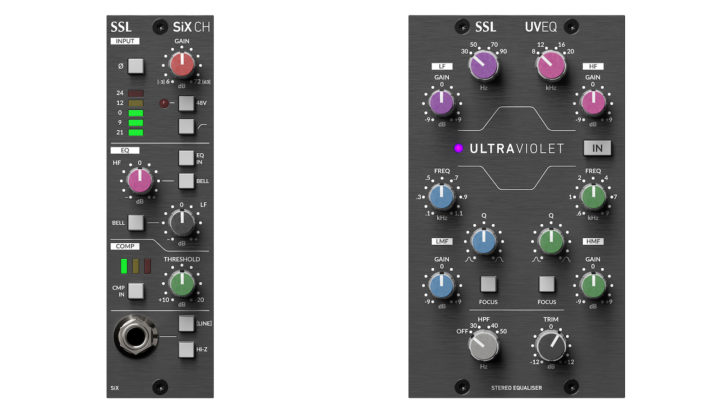
Before releasing these new modules, Solid State Logic already had a significant presence in the 500 Series processor market. Now its offerings are even more varied. SiX Channel (SiX CH) is a versatile and aggressively priced preamp/channel strip, and the UltraViolet Stereo Equalizer (UV EQ) is the company’s first stereo EQ in the 500 Series format. For this review, SSL sent a pair of SiX CH units and a UV EQ.
SIX FOR 500
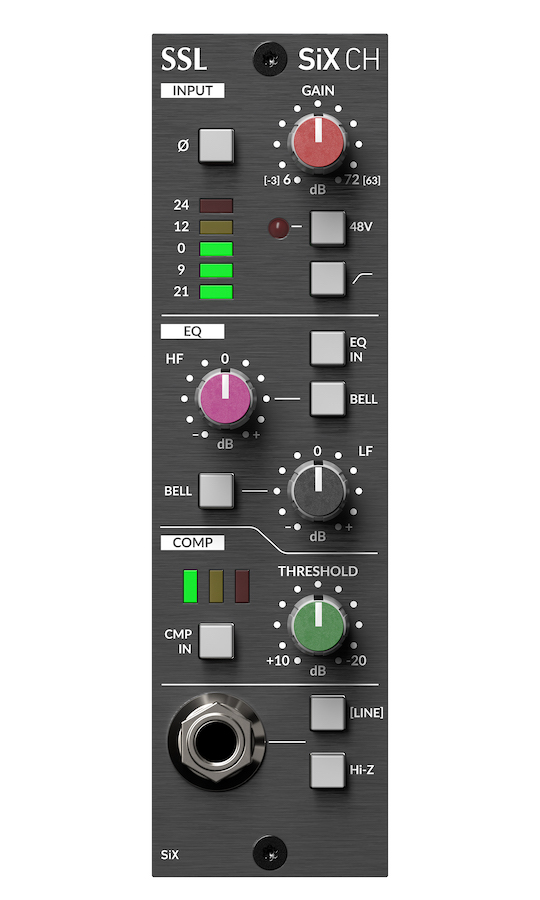
Featuring SSL’s distinctive gray background and colored buttons, SiX CH offers functionality similar to a channel on another of the company’s products, the SiX mixer. You get mic, line and Hi-Z inputs, two bands of EQ and a compressor. As is standard in this format, you make mic connections using the appropriate XLR input on the back of your 500 Series rack.
On the front of SiX CH is a ¼-inch jack for line and Hi-Z inputs. Next to that jack are Line and Hi-Z buttons, which allow you to select the input type. Pressing the Line button switches the active input from the XLR to the ¼-inch jack. If you want the high-impedance input, you must also push the Hi-Z button. It’s a little counterintuitive that the Line button needs to be in to activate the high-impedance input, but it’s a minor point, and you get used to it soon enough.
Other controls on SiX CH include a knob for Gain and switches for polarity reverse, 48V phantom power and a highpass filter. The latter is set at 75 Hz with a 12dB/octave slope.
While many 500 Series preamps offer only a single LED for signal present and overload, SiX CH features a five-segment, color-coded LED meter. The preamp itself is of SSL’s SuperAnalogue design, just like the one in the SiX mixer. According to the company, the design originated in the company’s Duality and AWS consoles. I tried SiX CH’s mic preamp on both sung and spoken vocals, acoustic guitar and mandolin. For mics, I used either a Mojave Audio MA-300 tube condenser or a Neat King Bee FET condenser. I also recorded DI electric guitar and bass through the SiX CH.
The preamp offered a clean and rich response, with quiet performance and plenty of gain. The mic gain goes up to 72 dB and the line 63 dB. I compared SiX CH to the other 500 Series mic preamps that I have installed, which I like plenty, and SiX CH’s tone held its own with them.
I also used the pair of SiX CHs for recording stereo acoustic guitar, and as long as I carefully set the controls on both units to match, the results were impressive.
ALL THINGS BEING EQUAL
You can modify the performance of the preamp with SiX CH’s EQ and Compressor sections. Both are completely bypassed from the signal chain until they’re switched in with the EQ In and CMP In buttons, respectively.
The EQ configuration is the same as on the SiX mixer, with its circuitry related to that of the SSL E Series console EQs. It consists of two bands, HF (high frequency) and LF (low frequency). You control each with a single boost/cut knob with a handy center detent.
Each band gives you the choice of two filters: a high-shelf set at 3.5 kHz or a bell at 60 Hz for the highs, and low-shelf set at 60 Hz or a bell at 200 Hz for the lows. The shelving filters are on by default, but pressing the Bell button for either band switches it.
I found it handy for minor tweaks such as adding highs to an acoustic guitar or accentuating the bottom on a spoken-word recording. In order to be impactful in a two-knob configuration, SSL gave each band a pretty wide Q. Particularly with the shelving filters, I had to be fairly ginger with my settings.
By offering the filter and frequency choices, SSL made the EQ about as versatile as you can get given the space limitations of 500 Series units, particularly those with as many features as SiX CH.
SSL System T Gets V3.1 Update
The compressor section is also of the one-knob variety. It provides an over-easy-style response with a fixed 2:1 ratio. Both the attack and release times are preset, with the former at 5 milliseconds and the latter in the neighborhood of 300 ms.”
The knob controls threshold, and a horizontal three-step LED gives you a rough visual representation of the amount of gain reduction.” It’s handy to have the compressor right there. I used it both on input, which I think it’s particularly suited for, and as a hardware insert in my DAW while mixing. I found it to be pretty transparent, even at higher settings.”
Because it’s got such limited parameter control, the compressor seems better for constraining dynamics than as a creative tool for changing or coloring the sound. It worked well for containing fluctuating levels of an electric bass part. Without the compressor on, some of the louder notes might have clipped.
ULTRA-COOL UV EQ
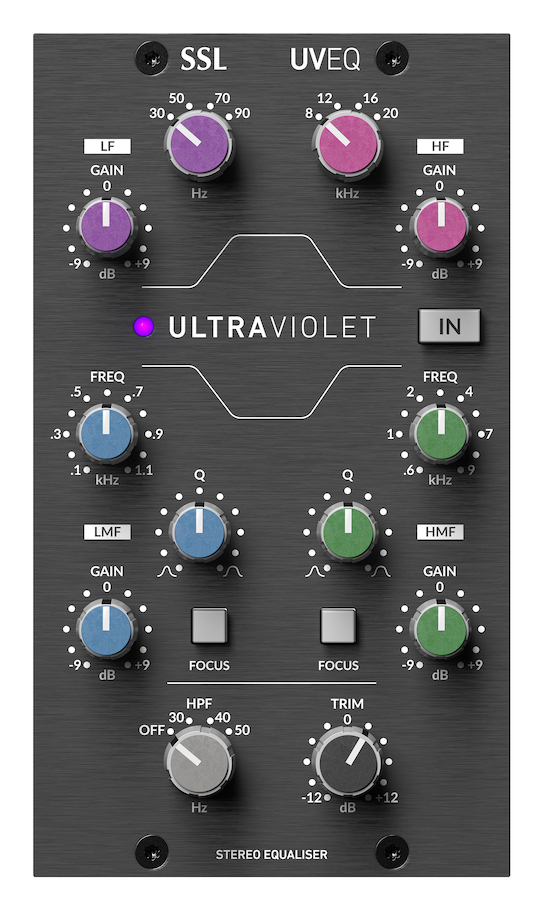
Because it’s a stereo module, UV EQ takes up two spaces in a 500 Series rack. SSL started with the minimum-phase EQ circuitry from its Fusion processor and added bands for low-mid and high-mid. On the low end, UV EQ features a highpass filter with a stepped frequency control. It offers settings of Off, 30 Hz, 40 Hz and 50Hz, with a slope of 18dB/octave.”
Although I would have preferred a couple more frequency settings above 50 Hz, many 500 Series EQs don’t offer highpass filters, so no complaint here. Having it for rolling off lows when tracking is one of its most useful abilities. Next to the HPF is a Trim control on the output stage. It offers a range of plus or minus 12 dB of gain.”
The LMF (low-mid) and HMF (high-mid ) bands both offer frequency, gain and Q controls. The LMF offers continuously sweepable frequencies between 100 Hz and 1.1 kHz and the HMF between 400 Hz and 6 kHz.”
All the Gain knobs on UV EQ are continuous but feature a detent at 12 o’clock, delineating the line between boosting and cutting. It helps you get your bearings if you’re not looking at the knob when making an adjustment.”
The LMF and HMF bands each have a switch titled Focus. SSL designed the feature to let users pinpoint a narrow frequency range for adjustment. When pressed, the Q gets narrower relative to where you’ve set it, and the gain range is increased.”
The LF and HF bands consist of shelving filters located at the top of the unit. I’m guessing that SSL chose that placement to maintain the symmetry of the knobs, which would have been difficult if the LF were on the bottom. It took me a little while to get used to the lows being on top.
The LF band features stepped settings of 30 Hz, 50 Hz, 70 Hz and 90 Hz. The HF choices are 8 kHz, 12 kHz, 16 kHz and 20 kHz.
The unit also features a conveniently positioned In button, which lights up a violet-colored LED when engaged. When it’s off, the EQ is completely bypassed. Having the In button makes it easy to compare sounds with and without the EQ.”
Once I got accustomed to its architecture, I found UV EQ to be quite an effective and musical EQ. SSL touts its abilities on the mix bus, referring to it as “the ideal partner to the legendary SSL 500 Series Bus Compressor.” Although I didn’t have that compressor on hand to try it out, I did use it on the mix bus with good results.
If you have an otherwise “in the box” mix, running it through the UV EQ allows you to add not only frequency tweaks but analog color.
NO DIGITAL HERE
Both the SiX CH and UltraViolet are valuable new products for SSL, which has been putting out quite a bit of new products lately. The former gives them a preamp/channel strip that will be highly competitive due to its low price, clean sound and useful features.”
Although more in line with SSL’s other 500 Series products from a price standpoint, the UltraViolet Stereo Equalizer is versatile and has an excellent sound. It fills a gap in the manufacturer’s 500 Series line for a stereo EQ module.
I always have high expectations for SSL products, and I certainly wasn’t disappointed with either the SiX CH or UV EQ. Both perform as advertised and are potent tools to have in a 500 Series collection.
